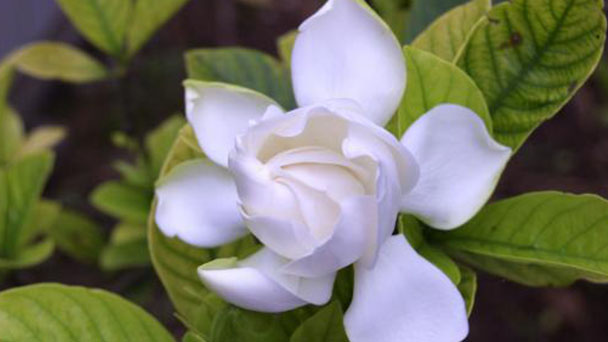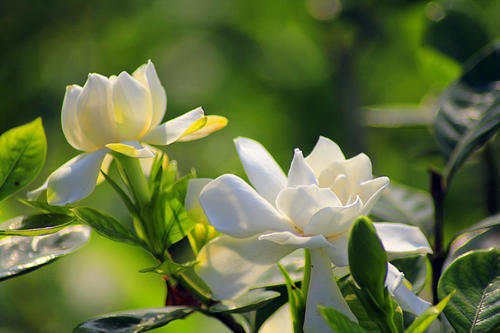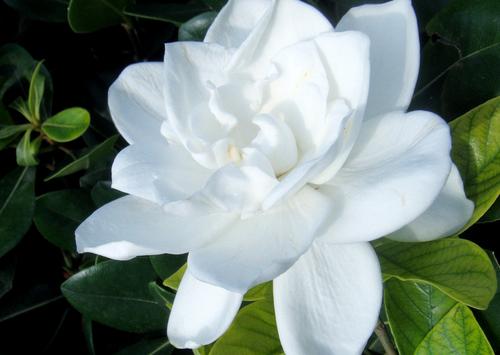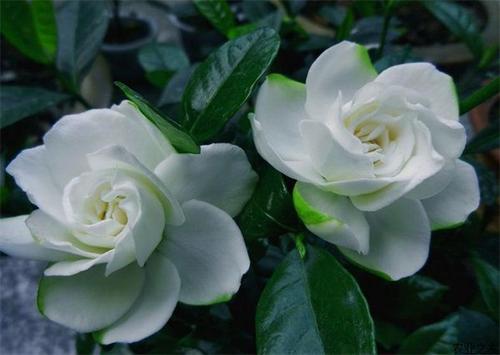How to propagate Cape jasmine
Written by Maggie
Oct 13 2021

Now many flower friends like to propagate their own plants to harvest more plants, and Cape jasmine is a very good smell of flowers. How to propagate Cape jasmine? The following are propagation methods of Cape jasmine.

Water plugging propagation method of Cape jasmine
Preparation of Water plugging propagation
A container with a large air diameter; a jar. Foamboard, clean water, a well-grown cape jasmine flower.
Water plugging propagation steps
(1) Cut the flower branches of Cape Jasmine about 10cm in length, which is healthy and free of pests and diseases, and only keep 2~3 leaves. If a branch is running out of juice, it is best to dry it in a cool place.
(2) If it is a jar and other containers, then, the prepared branches can be inserted into the container, the leaves should be exposed outside the bottle. In addition, the water in the bottle should pay attention to, it is best to replace the time of 1~2 days, keep the water clean can increase the survival rate
(3) In the warm light is good, ventilated and not directly in the sun, the balcony of the most by the inside of the place is very good ~
(4) After a month or two, we can see two or three long white roots. Then remove the branches, bury them in a pot, and water and fertilized them in the same way you would normally plant Cape Jasmine flowers.
(5) If it is in the water tank, pond and other places, then we should first prepare the foam board in accordance with a certain row spacing and plant spacing on the holes, and then we will be ready to branch one by one into the holes.
At the same time, make sure the water is clean too. When the roots are about 3cm long, they can be transplanted into a pot
When we apply Water plugging propagation, you can insert a few more branches to prevent the branches from dying ~ the probability of success will be higher ~
In addition, the best method is to do it in the spring when it is not cold ~
Layering propagation method of Cape Jasmine
Preparation for Layering propagation
1 Pot of well-growing 3-year old mother Cape Jasmine flower; Plant pots ready for transplanting and fertile, loose, well-drained acid soil.
Layering propagation steps
(1) Select robust branches, it is best to be 25 ~ 30 cm long branches for laminating, such as the selection of branches that have tri pronged branches, so you can be laminated at the fork. After propagation, you can get three seedlings.
(2) The mother plant selected lower branches of the column bent, and then buried in the soil, shoot exposed, and fixed with bamboo, so that its upright growth, generally after 20 ~ 30 days can take root. It can be separated from the mother plant in June, until the spring of the next year can be divided, or directly on the pot.

Sowing propagation method of Cape Jasmine
Preparation of Sowing propagation
(1) Seed selection: choose full, dark red ripe fruit, shell drying or drying as seeds. Before sowing propagation, with scissors to cut the seed skin, dig out the seeds, rub in hot water, remove floating seeds or impurities, and then sink the enrichment of the seeds out, spread on the bamboo mat, ventilated air to dry too much water, you can sow.
(2) Site selection: select deep loose and fertile sandy loam soil layer, and smooth.
Sowing propagation steps
(1) More in the spring, spring is suitable for plant growth and germination. Or it can be planted around the autumnal equinox in the fall.
(2) It will be ready to seed seeds mixed with fire ash, and then evenly sow the soil, and then with fine soil or fire soil cover, finally cover the grass water, in the growing season of the seed to often keep the soil moist, for the sake of seedlings.
(3) The seedlings of Cape Jasmine come out about 20 days after sowing. After the seedlings come out, the grass cover is removed. When the seedlings grow 2 to 3 true leaves, the seedlings are kept in the container without weeds growing.
(4) Appropriate topdressing, 2 ~ 3 times in the first year of autumn sowing, 1 time in the second year of spring, summer, and autumn; Spring sowing in the spring, summer, autumn, winter each for 1 time. When the seedling height is more than 30cm, it can be planted. When the seedling height is 30cm, it can be planted when the spring sowing is the next spring.
Cutting propagation method of Cape Jasmine
Cutting propagation time selection
Cutting propagation can be cut at any time from October to November in a greenhouse in north China and from April to the beginning of autumn in south China, but the survival rate is highest between summer and autumn.
Cutting propagation steps
(1) Cuttings selected healthy growth of 2 years of branches, the length of 10-12 cm, cut off the lower leaves, the lower end of the cut into a 45-degree angle of the slope.
(2) Every 20 ~ 30 pieces into small bundles, put the inclined cutting mouth into 0.05% root powder solution or 0.05% naphthalene acetic acid solution soak for 15 seconds, take out the dry liquid can be.
(3) The branches have been prepared in the sand, row spacing of 20 ~ 25cm, plant spacing of 7 ~ 8cm, insert the cuttings into 2/3 of the soil, compaction watering, set up a low shade.
(4) Rooting can take place in about 15 days under the conditions of 80% relative humidity and 20-24 ℃. After the seedlings have taken root, they can be placed in a pot!
Division propagation method of Cape Jasmine
Preparation for division propagation
There are often many tillers growing around the rhizosphere of Cape Jasmine, so what we want is a pot of robust Cape Jasmine flowers with the tillers already grown.
Division propagation steps
Every year in early spring or late autumn and early winter, choose to grow robust plants.
Dip the surrounding topsoil, carefully observe the tiller, check its trend, according to the natural spread interval of the roots, with the hand or knife from the gap to separate the tillers from the roots, and plant them as the seedlings.

Read Next:
Cape Jasmine Profile
Cape Jasmine (Gardenia Jasminoides) Care & Propagation Guide
Latest Updated
- Benefits of Bugleweed - 7 Science-backed Health Benefits
- Bugleweed Dangers & Side Effects - Is It Poisonous?
- How to Plant Evergreen Trees - What You Should Know
- When to Plant Evergreens - Grow Guide for Evergreen Trees
- 12 Wonderful Evergreen Shrubs for Your Garden
- 12 Popular Evergreen Plants with Pictures for Beginners
- When And How To Prune A Lilac Bush Like a Pro
- How to Grow & Care for Lilac Vine (Hardenbergia Violacea)
- Japanese Lilac Tree (Syringa Reticulata) Care & Propagation Guide
- Shumard Oak Pros and Cons - What to Know
Popular Articles
- Winter maintenance of Antirrhinum Majus
- How to Grow Terminalia Mantaly Tree
- How to Grow and Care for Crossostephium Chinense
- How to grow Antirrhinum Majus in spring
- Peristeria Elata (Dove Orchid) Profile: Info & Care Guide
- Underwatered Snake Plant (Sansevieria Trifasciata) - Signs And How To Fix
- How to Care for Brazilian Jasmine Plant (Mandevilla Sanderi)
- How to Grow & Care for Graptopetalum Purple Delight in Summer
- Rosa Chinensis (China Rose): Plant Growing & Care Tips
- How to Care for Baby Sun Rose (Aptenia Cordifolia)